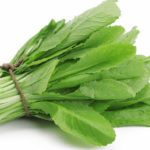Dr. Amy Myers, the Medical Director at Austin Ultrahealth Institute in the US, emphasizes that each type of vegetable carries its own unique nutrients, and the method of preparation and consumption can affect the amount of nutrients we absorb. Improper cooking can reduce valuable nutrients and even be harmful to health. However, eating raw vegetables is not always better, and it depends on the type of vegetable.
Dr. Myers also shares that whether eaten raw or cooked, vegetables still provide fiber, vitamins, and essential minerals such as potassium, folate, vitamins A, C, and E, along with many other compounds. “Indeed, the cooking process can be influenced by temperature, water, seasoning, food combinations, cooking time… and it can decrease the nutrients in vegetables. However, some vegetables have better effects when cooked due to the chemical transformations that occur during the process,” she says.
Here are 4 vegetables that according to Dr. Amy Myers, provide more nutrients when cooked, despite being commonly believed to retain more nutrients when eaten raw:
Carrots

“When you have to choose between eating raw or cooked carrots, I recommend eating them cooked,” emphasizes Dr. Amy Myers. She gives three reasons to explain this viewpoint.
The first reason is that although raw carrots may contain more vitamin C, cooked carrots help the body absorb more beta-carotene. Beta-carotene is then converted by the body into vitamin A, a nutrient that plays a role in improving the immune system and providing many other health benefits. In addition, beta-carotene is a key nutrient found in carrots, while the amount of vitamin C in carrots is not particularly high and can be easily supplemented from other food sources with higher levels.
The second reason is that the cooking process can actually reduce the level of vitamin C in carrots, but only to a small and insignificant extent. This loss can be minimized by applying appropriate cooking methods such as steaming, boiling with a lid, avoiding overcooking or cooking at high temperatures.
Lastly, cooked carrots are generally easier to digest than raw carrots.
Kale

Kale is known as a nutrient-rich “superfood” that is associated with health and longevity. Common information suggests consuming kale raw or lightly processed, such as in salads or juicing, to preserve its rich nutritional content. However, according to Dr. Amy Myers, it is better to focus on cooking kale instead of eating it raw.
Dr. Myers explains: “While cooking with lots of water and at high temperatures may not be the best choice for leafy green vegetables packed with vitamins and minerals, it doesn’t mean we should overcook kale by using high heat or adding excessive amounts of salt. The best cooking method is steaming, to minimize nutrient loss and promote health.
Specifically, steaming kale can help deactivate enzymes that inhibit the body’s absorption of iodine, an essential mineral for the thyroid gland. In the case of boiling, bring the water to a boil first, then add the kale, and quickly remove it as soon as it is cooked to retain optimal nutritional content.
In addition, not everyone may find the bitter taste of raw kale palatable, and this taste will diminish when kale is cooked. Raw kale is also more difficult to digest than when it is cooked, and it can potentially cause digestive issues. Dr. Myers also emphasizes that consuming unwashed raw kale can contain pesticide residues, which can be harmful to health. However, it cannot be denied that raw kale still has high nutritional value and is good for health.
Tomatoes

Dr. Amy Myers points out that both ripe and raw tomatoes offer health benefits. However, studies have shown that ripe tomatoes can provide more health benefits than raw tomatoes. Notably, ripe tomatoes do not lose much nutritional value when cooked; instead, cooking increases the concentration of lycopene and antioxidants, which are beneficial compounds for health. Therefore, experts often recommend eating cooked tomatoes.
Dr. Myers also emphasizes that all cooking methods can enhance the antioxidant compound lycopene in tomatoes, a factor that has been proven to reduce the risk of chronic diseases such as heart disease and cancer. For example, boiling tomatoes for about 30 minutes can increase the lycopene content by up to 50%. However, she warns that cooking at high temperatures for too long can decrease some other nutrients.
When consuming raw tomatoes, Dr. Myers advises to only eat them when they are fully ripe, and avoid green or moldy tomatoes to prevent poisoning and illness. It is recommended to remove tomato seeds when eating raw as they can be hard to digest and increase the risk of appendicitis. Also, it’s not advisable to eat raw tomatoes on an empty stomach, as they contain phenolic resin that can cause nausea and irritate the intestines and stomach.
Asparagus

Asparagus is not only an attractive food with a juicy texture but also a rich source of nutrients, providing many health benefits. It is a vegetable rich in vitamin K, folate, anti-inflammatory, and antioxidant compounds that enhance energy and protect against cancer-causing cells. There is a belief that eating raw asparagus can retain more antioxidants and vitamins, avoiding loss during cooking. However, according to Dr. Amy Myers, cooking asparagus can actually provide greater health benefits, especially for individuals with weak digestion.
Dr. Myers explains that cooked asparagus has a softer texture and, in fact, more essential nutrients in asparagus are released when cooked. The cooking process breaks down cell walls, making vitamins such as A, B9, C, and E more bioavailable and easily absorbed by the body. Specifically, polyphenols—a powerful antioxidant compound in asparagus—increases by 16% after cooking, along with increases in beta-carotene and quercetin, by 24% and 98% respectively.
However, Dr. Myers also notes that the cooking process can reduce the amount of vitamin C by 10 to 52%. Therefore, the choice of asparagus preparation method depends on specific nutritional needs to optimize the benefits of this valuable vegetable.




































